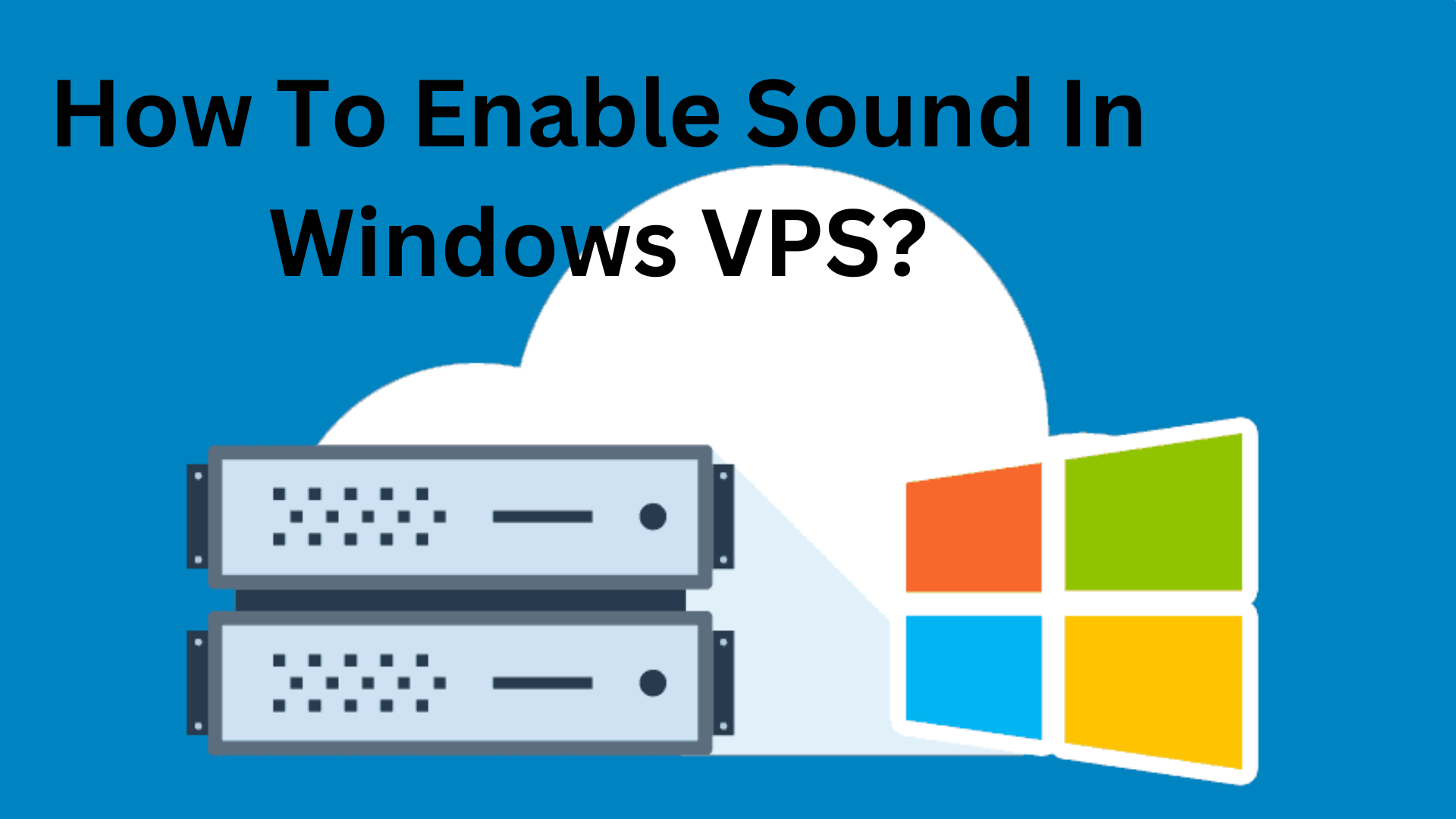
Sound is a vital component of any computing experience, and this is especially true for Windows VPS. Whether you're using your VPS for multimedia applications, remote desktop applications, VoIP calls, accessibility, or troubleshooting, sound is essential for a smooth and effective experience. Therefore, it is essential to ensure that sound is enabled on your Windows VPS. In this article, we'll explore how to enable sound in Windows VPS, and how it can improve your computing experience.
Reasons why sound in VPS Windows is important?
While some users may think that sound is not necessary in a VPS, it actually plays a vital role in many applications. here are reasons why sound is important in Windows VPS, and how it can improve your computing experience.
-
Multimedia Applications: Sound is crucial for multimedia applications such as video editing, music production, and even gaming. Without sound, these applications will not function correctly, and you will miss out on the full experience. For example, if you're editing a video, you need to be able to hear the audio track to synchronize it with the video footage.
-
Remote Desktop Applications: Windows VPS is often used for remote desktop applications, which means you can access your VPS from anywhere in the world. However, without sound, you will not be able to hear any audio from your remote VPS. This can be especially important if you're using your VPS to play music or videos remotely.
-
VoIP Applications: Voice over Internet Protocol (VoIP) applications such as Skype and Zoom require sound to function properly. If you're using your VPS for VoIP calls, you need to make sure that sound is enabled, so you can hear and communicate with others clearly.
-
Accessibility: Sound is also an essential component for users with disabilities. For example, visually impaired users rely on sound cues to navigate their computer systems. Without sound, they would not be able to use their VPS effectively.
-
Troubleshooting: Finally, sound can be crucial for troubleshooting issues on your VPS. If there are any problems with your audio driver, you need to be able to hear the error messages to diagnose and fix the issue.
How To Enable Sound In Windows VPS?
Enabling sound in a Windows VPS can be a bit tricky, as by default, most VPS providers disable sound to conserve resources. However, if you need to use audio on your VPS for tasks such as video conferencing or media playback, it's essential to learn how to enable sound in your Windows VPS. In this article, we'll walk you through the steps to enable sound in Windows VPS.
Step 1: Log in to Your Windows VPS
First, log in to your Windows VPS using Remote Desktop Connection. You will need administrative privileges to make changes to the sound settings, so make sure that you log in as an administrator.
Step 2: Check Audio Settings
Once you're logged in to your Windows VPS, open the "Control Panel" and select "Sound." Check the settings to ensure that your audio device is detected and enabled. If your audio device is not detected, you may need to install the audio driver for your VPS.
Step 3: Install Audio Driver
To install the audio driver, download it from the manufacturer's website and install it on your VPS. Make sure to download the driver that is compatible with your Windows version and architecture. Once you've installed the audio driver, restart your VPS.
Step 4: Enable Audio Playback
After you've installed the audio driver and restarted your VPS, go back to the "Sound" settings in the Control Panel. Click on the "Playback" tab, and you should see your audio device listed. If it's not, click on "Show Disabled Devices" and "Show Disconnected Devices" to display all devices.
Step 5: Select Default Playback Device
Select your audio device, and then click on "Set Default." This will make your audio device the default playback device, and you should now be able to hear sound on your VPS.
Step 6: Test Audio
Finally, to test your audio, click on the "Test" button. You should hear a sound from your speakers or headphones.
By following the steps outlined above, you should be able to enable sound in your Windows VPS and start using audio for your tasks. Remember to check the audio settings, install the audio driver, select the default playback device, and test your audio.
- TAGS:
- BUY VPS
COMMENTS (0)
The list of comments is empty